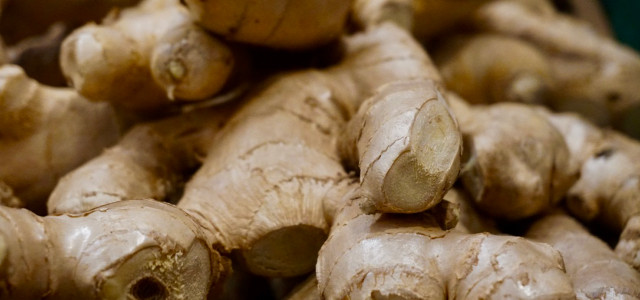The benefits of ginger roots are numerous – it’s simply good for you in too many ways to count. What people often don’t know is that ginger is packed full with nutrients.
The origins of ginger can be traced to the far east – where it exactly roots from remains a mystery. With its distinctive aroma and its prescribed health benefits, the flowering ginger plant’s root (or known by its scientific name, the “rhizome”) finds widespread use as a spice as well as in traditional home-medicine.
Ginger root is good for you in countless ways and is much more than a common ingredient in Asian cuisine. Ginger is most commonly cultivated in India, Sri Lanka, Indonesia, Vietnam, and Japan – recently complemented by the latest additions to the ginger growing countries: Australia, Nigeria and France.
Types of Ginger Available
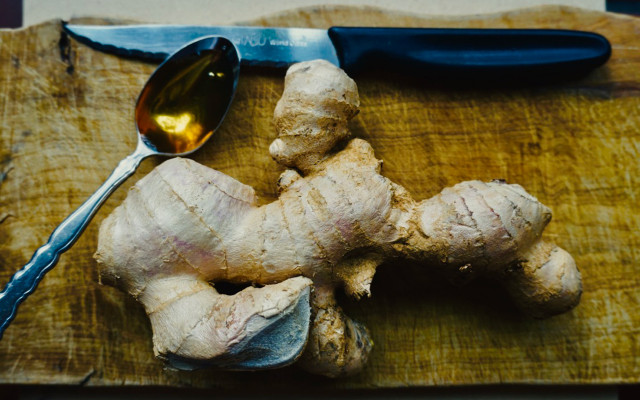
You’ll find ginger on virtually every supermarket shelf in the produce department. However, growing your own ginger on your balcony or windowsill is also an option. You can buy ginger ground as a spice or in capsule form at your local pharmacy. Less commonly found products are ginger extract, candied ginger, ginger syrup or pickled ginger.
Pickled ginger is known as a speciality and health food in China. There you’ll also find ginger plums, ginger nuts and loads of additional tasty treats. Heading further east, pickled ginger is particularly popular in Japan. Sushi ginger – or gari – is often served and eaten after sushi. It is considered an essential part of presenting the dish in Japanese cuisine.
Finally, it’s not only in Brits that have a love for ginger ale and ginger beer. In Japan you’ll also find ginger flavored wine made from a fermented blend of ground ginger root and raisins.
More Japanese recipes: Edamame Beans: Buying, Growing, & Eating This Superfood
Ginger Root Benefits: What makes Ginger so Good for You?
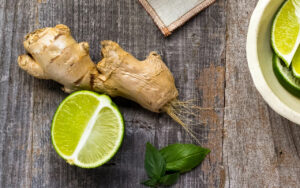

Ginger is simply good for you – any sorts of side effects are widely uncommon. This spice and medicinal herb contains an array of health benefitting essential oils, ginger oil, resin and resin acid.
Ginger is rich in vitamins. It’s packed full of vitamin C and also provides natrium, potassium, and phosphorous. This rhizome possesses antibacterial properties and is an effective plant-based remedy for an upset stomach.
This health benefits of ginger root are more than evident. Ginger also naturally stops the spread of bacteria and viruses. It also serves as an antiemetic, meaning it helps to treat nausea and vomiting. Ginger is thus something everybody should have tucked away in their luggage on the next long trip abroad.
This golden yellow ginger root also benefits blood flow and circulation – both in predominantly positive ways – in addition to the production of stomach acid, salivation as well as bile production.
Read on: How to Store Ginger Root: 6 Ways to Keep Your Ginger Fresh for Longer
The Benefits of Ginger: Is It Good for Losing Weight?
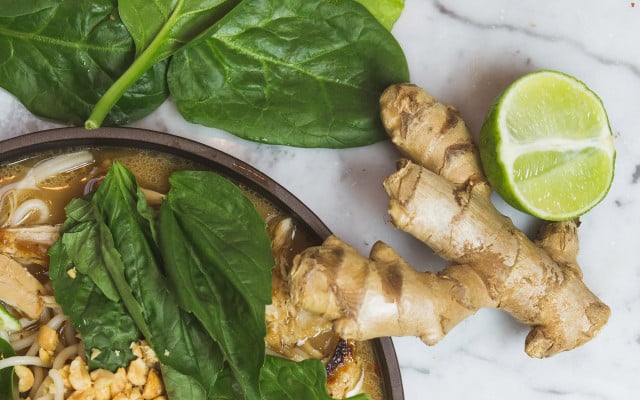


Ginger increases metabolism and promotes stomach acid production and fat digestion – a couple positive aspects you may like to see in an effective diet food. Some studies even suggest that test subjects who consumed a glass of ginger water alongside their meal ate less than those who hadn’t. Yet again, conclusions of this sort are scarce. Better take this one with a grain of salt.
Ginger-based diets are certainly abundant, but this root alone won’t make you skinny. Diet counselors advise consuming two grams or three quarters of an ounce of ginger daily. Just don’t expect to lose that chocolate craving in an instant after making the switch.
Nevertheless, you can still reap the benefits of ginger as a part of a balanced diet. Eating a bit of ginger can help compensate for various essential dietary minerals.
Is Ginger Good for You if You’re Pregnant?



Ginger root generally helps treat or prevent nausea and vomiting. However, a clear consensus is lacking when it comes to whether this is also the case during pregnancy. In early stages, this could very well prove to be true. At any point thereafter is still up for debate.
Some make the claim that too much ginger can induce premature labor due to its ability to stimulate blood flow. Traditional Chinese medicine on the other hand views consuming ginger during pregnancy as virtually harmless. Better play it safe and go without the otherwise beneficial ginger root in late stages of pregnancy.
Stovetop and Teapot Ginger Recipes
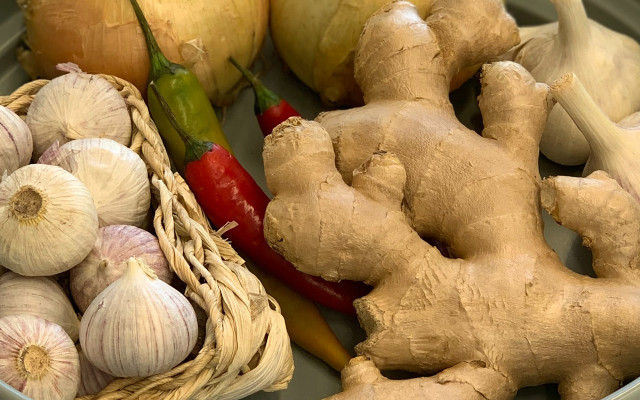


Ginger doesn’t just benefit your health. It goes well with just about anything: as a culinary companion to dishes starring meat and fish, as a spice added to vegetables, curry and rice or ground raw into your morning cereal. The following easy and simple ginger recipes will help you meet your daily intake quota.
Ginger Tea Benefits: Protects Against Colds
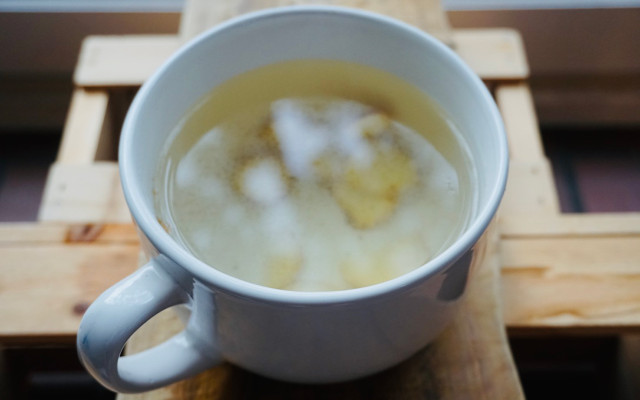


Making your own homemade ginger tea couldn’t be easier. This warm and healthy cup of ginger joy helps to boost your immune system throughout the chilly winter months and prevents colds. You can also drink ginger tea in the summer – say, as a refreshing ginger iced tea, for example.
Making your own ginger tea from scratch isn’t too much work at all.
- Wash the ginger root.
- Chop off a 2-inch large piece, thinly slice and put it in your tea strainer.
- Add the boiling water and let steep for around fifteen to twenty minutes.
- Ginger tea infusions with green or black tea are also worth a try. You can also add some flavor by adding garlic, mint, lemon grass, thyme, honey, sugar or lemon juice.
More information: The Benefits of Ginger Tea: How to Make a Healthy Infusion
Ginger root can also benefit you breath. It neutralizes the taste and smell of garlic and thus doesn’t bar you from social interaction for a limited time thereafter. If you’re looking for more heavy-duty natural cold relief, you may want to have a go at our homemade cough syrup included in our guide of Natural Home Remedies for Colds: 6 Easy Recipes.
Another option: Prepare a healthy and healing latte with ginger along and turmeric with this Golden Milk Recipe.
Ginger Water: Refreshing Health Benefits for On the Go



Ginger water is prepared in similar fashion to ginger tea. The only difference is in the added flavors and temperature – this refreshing beverage doesn’t require any additional aromas and is fine to drink at room temperature. Ginger water is thus a healthy alternative to tap water you can bring with anywhere.
More information: Ginger Water: Health Effects and Recipe
Ginger Lemonade: Sweet Sippin’
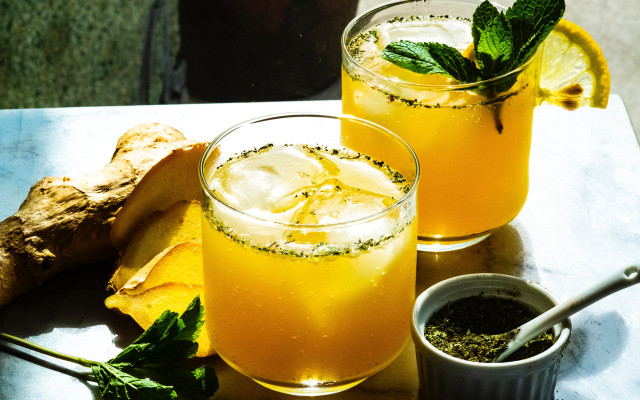


This one may not be exactly as healthy as ginger tea, but it sure does offer a splendid dose of refreshment while basking under the sun on a hot summer’s day.
- For around four cups of ginger lemonade, you’ll first need to finely slice a four in. piece of ginger root and a lemon.
- Then add around 3/8 cup of sugar and the lemon juice to the pitcher.
- Fill it on up with hot water, let steep for around two hours and cool.
To save some energy around the house, let your ginger lemonade cool off a bit at room temperature first before sticking it in the fridge. Once chilled, throw in some ice cubs and enjoy!
Home-cooked Ginger Peel Stock



Use organic vegetables and you can put the peels back to use by whipping up a tasty homemade vegetable broth. Here’s how it’s done:
- Place the washed vegetable peels (including the ginger peels, of course) into a pot filled with water and bring to a boil.
- Keep at medium heat until the broth is satisfactory in color and taste.
- Run it through the strainer and add salt and pepper to taste.
Read more: Homemade Vegetable Broth Recipe: Easy, Organic and with Freshest Ingredients
Your tasty and sustainable homemade vegetable stock will keep for around a week when stored in the fridge in sealed jars. Check out our guide for more tips on how to reuse vegetable scraps.
Ginger Oil
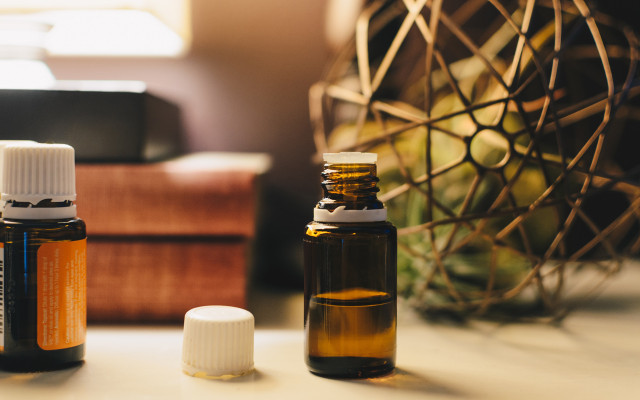


Ginger oil combines the numerous ingredients of ginger in a concentrated oil form. Contained in ginger oil, gingerol are said to stimulate blood circulation and help to relax your muscles. In addition, it finds use in aromatic therapies and can also be used a massage oil. Give it a try!
Is Ginger Sustainable?



Whether in Asian dishes or in ginger tea, ginger just tastes great and is also good for your health. But be careful, where and how you buy ginger.
Through 2018, China was the largest importer of ginger to the United States. Imports have seen steady increases from other producing countries such as Mexico, the Dominican Republic, Peru, Brazil, Nigeria and Thailand. Together with growing U.S. demand for ginger in its recent transformation from a niche to mainstream crop and the country’s lack of a suitable climate for widespread cultivation, the United States commonly finds its place at the top of the list of world importers of ginger.
Although ginger is grown on a smaller scale in the lower 48, the crop is usually only marketed locally in a handful of producing states. Although you’ll find ginger on store shelves sourced from all around the world, it is very important to know where your ginger is sourced from. Ginger from China may often be cheaper than its South American counterpart, yet the environmental footprint resulting from longer transportation routes may differ considerably.
Also keep your eyes peeled for organic ginger clearly labeled with the USDA Organic seal. This is one surefire way to avoid ginger grown with the help of pesticides. Do this and you’ll also prevent these harmful chemicals from being used elsewhere in the future with the power of your consumer dollar.
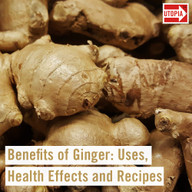


Read on:
- Sugar Substitutes and Natural Sweeteners: What You Should Know
- Avocado Benefits: How Healthy is this Trending Superfood?
- Healthy Inca Grain? 9 Things you need to know about Quinoa
This article was translated from German to English. You can view the original here: Wie gesund ist Ingwer? Die Wurzel und ihre Wirkung.
Important Information regarding Health-related Topics.
** Links to retailers marked with ** or underlined orange are partially partner links: If you buy here, you actively support Utopia.org, because we will receive a small part of the sales proceeds. More info.Do you like this post?






